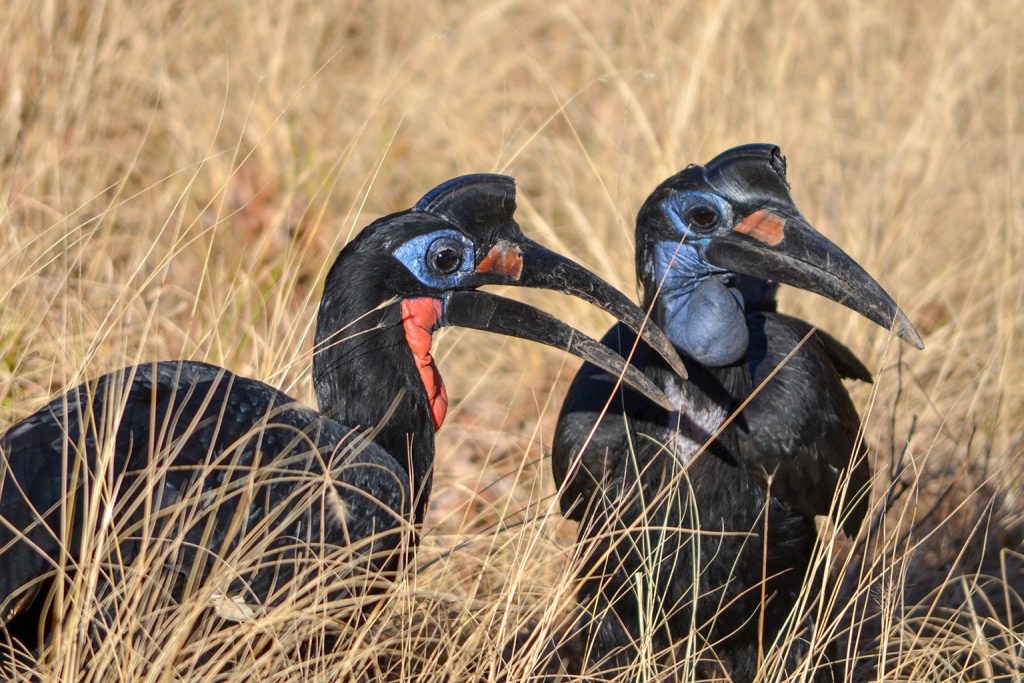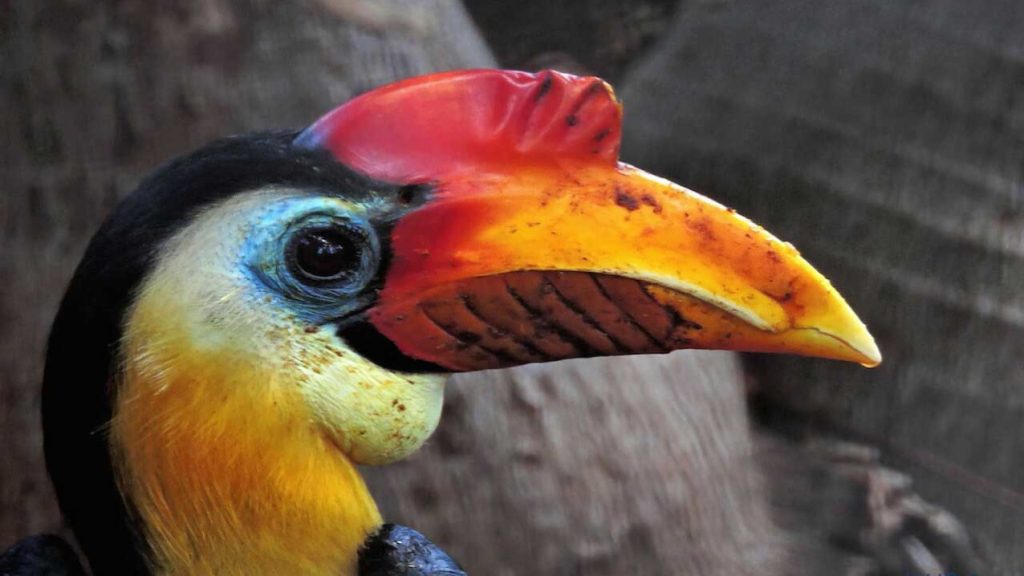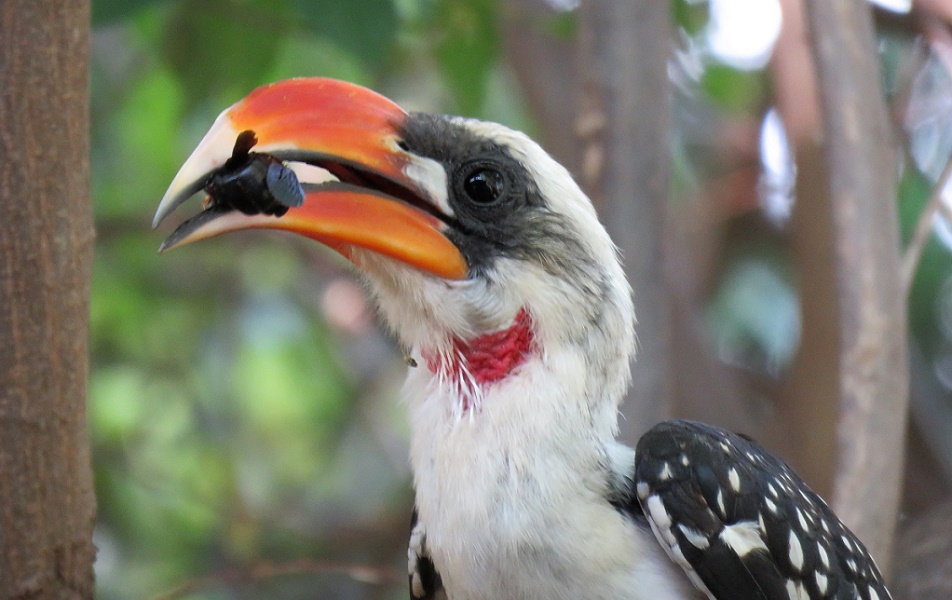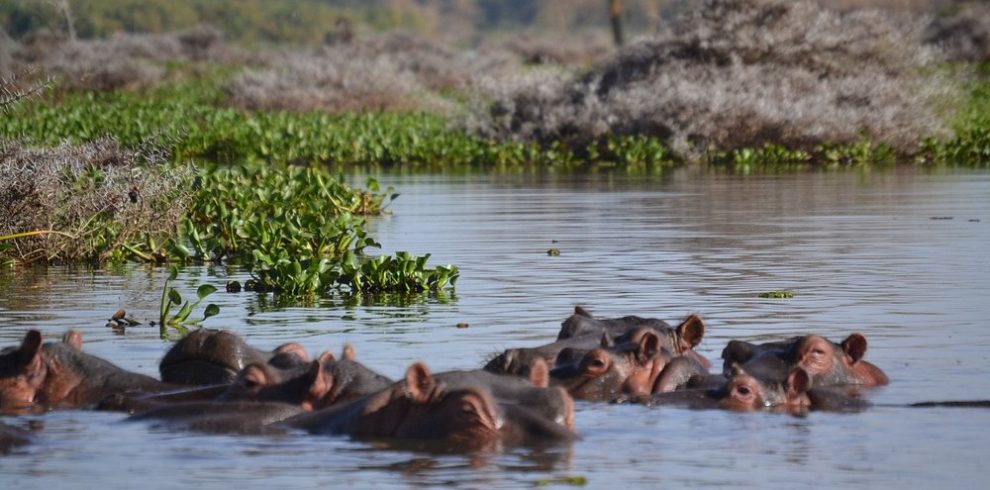
The Ground Hornbill (Bucorvus leadbeateri), one of the most striking and intriguing bird species in sub-Saharan Africa, has captured the attention of birdwatchers, ecologists, and wildlife enthusiasts around the world. This bird is known to be large, unique in appearance and behaviours thereby standing out in the world of birds, which is diverse. With its powerful beak, impressive wingspan, and solitary lifestyle, the Ground Hornbill is a bird that not only commands respect but also offers fascinating insights into the natural world. In this article, we will delve into 5 fascinating facts about the Ground Hornbill, highlighting its characteristics, behaviors, and ecological role in Africa.
1. The Ground Hornbill Is a Large and Powerful Bird

One of the most striking facts about the Ground Hornbill is its large size and physical power. The Ground Hornbill is the largest species in the hornbill family, making it a visually impressive bird to encounter in the wild. With its towering stature, muscular build, and powerful beak, the Ground Hornbill commands attention wherever it goes.
Size and Weight
The Ground Hornbill is known for its considerable size, with males typically reaching lengths of 3.5 to 4 feet (1 to 1.2 meters) from head to tail. They may be up to 6 feet (1.8 meters) across the expanse of their wing, and in consequence they fly with imposing effect, though not to any very great distance. The size of these birds ranges between 4.5 and 6.5 kilograms (10 to 14 pounds) with the male varieties being slightly larger than the female varieties. They are also an impossibility on the ground, where they are most frequently observed foraging and in motion, and are a formidable form, being of this size, with heavy legs and well-developed musculature.
Distinctive Appearance
The Ground Hornbill has a distinctive and captivating appearance. The biggest and most recognizable characteristic is its curved, strong bill accompanied with a casque (a fleshy bony structure on top of the beak) making the bird have a very distinct profile. Although the casque is not involved in feeding, it serves a purpose in communication and even as a way of attracting mates. The plumage of this bird is very largely black, and extends the color round the neck where it is all of a brilliant red or blue, it is otherwise rather dark. The Ground Hornbill’s size and physical features make it an imposing figure, and its combination of strength and beauty ensures that it remains an iconic bird of the African savannas.
2. The Ground Hornbill Is Primarily Ground-Dwelling

Unlike many other hornbill species, which spend a considerable amount of time in the trees, the Ground Hornbill is primarily a terrestrial bird. The behavior is what earned it the name because it usually spends a lot of its time on the ground in search of food and in socialization. This ground-dwelling lifestyle is one of the defining characteristics of the species and contributes to some of the unique behaviors that make the Ground Hornbill so fascinating.
Foraging on the Ground
One of the main activities of the Ground Hornbill on the ground is foraging. The bird eats a broad range of meals, some insects, fragile animals, creatures, reptiles, and even every now and again a bird or egg. It especially loves big insects, such as grasshoppers, locusts, and beetles, which comprise a large part of its diet. The Ground Hornbill is also known to hunt small vertebrates, such as rodents and lizards, using its powerful beak to crush and kill its prey. The legs and sharp talons of the bird are very useful to it in digging among the soil in search of food, and indeed its eyes are so airy that it sees the game even in the Avoca thrushes of the African jungle. While the Ground Hornbill may occasionally perch in low trees or shrubs to rest, it spends the majority of its time foraging on the ground, where it uses its height to survey the landscape and locate food.
Adaptation to the Ground-Dwelling Lifestyle
The Ground Hornbill’s adaptation to life on the ground has led to several notable behaviors. For instance, unlike many other hornbill species that build nests in trees, the Ground Hornbill prefers to nest in large, deep holes in the ground, often in old termite mounds or other natural cavities. Such nests not only protect the eggs and young of birds, but afford retirement to the adult. Additionally, the Ground Hornbill’s ground-dwelling lifestyle means that it faces fewer threats from aerial predators but must contend with dangers such as lions, hyenas, and leopards, which can pose a significant threat to the bird and its young. Nevertheless, the Ground Hornbill’s keen eyesight and ability to move swiftly on the ground help it avoid many of these threats.
3. The Ground Hornbill Is Known for Its Social Structure and Cooperative Behavior

One of the most intriguing facts about the Ground Hornbill is its social structure. Unlike many solitary bird species, Ground Hornbills are highly social and live in groups known as “coalitions.” These groups are usually of a size of 3-10 members, cooperating and bringing up their young as well as gaining food and defending their land. The social structure of Ground Hornbills is complex and cooperative, making them stand out in the avian world.
Cooperative Breeding
One of the most interesting aspects of Ground Hornbill social structure is their cooperative breeding system. Within these groups, all the adults raise their young, and there is also a significant contribution to the rearing of the offspring by non-breeding members. When a pair of Ground Hornbills breeds, the other members of the coalition assist by bringing food to the parents and young, guarding the nest, and providing protection against predators. This cooperative behavior is particularly important because Ground Hornbills have a slow reproductive rate. They usually just produce a single or two eggs in each breeding season, and the chicks take few months before maturity. Having several adults in the group ensures that the young has a higher chance of survival since they are supported by the whole group in terms of protection and resources.
Hierarchical Social Structure
In a coalition, subordinate relationships prevail with the dominant ones becoming the leaders in most of the activities, including foraging or guarding the territory of the group. In the group, the dominant male is usually the center of group activities and in ways, the females and the that are subordinate contribute in other ways. The social connections amid the individuals are powerful, regardless of the hierarchy, and the group acts as a unit towards the survival and success of the whole group. This social structure allows the Ground Hornbill to thrive in its environment, as it can share the responsibilities of foraging, nesting, and defense. It also increases the survival rate of the young since the cooperative breeding helps to make the chicks well taken care of.
4. Ground Hornbills Are Essential for Seed Dispersal
Another fascinating fact about the Ground Hornbill is its role in seed dispersal. While many birds contribute to seed dispersal, the Ground Hornbill is particularly important in the ecosystems it inhabits. As a forager that consumes a wide variety of food, including fruits and berries, the Ground Hornbill inadvertently helps to spread seeds across the landscape, playing a crucial role in maintaining plant biodiversity.
Seed Dispersal and Ecological Balance
Ground Hornbills often consume fruit from trees and shrubs, and as they move through their territories, they deposit the seeds of these plants in different areas. This seed dispersal facilitates plants to further adopt new regions, which leads to the replenishment of forests and savannahs. In areas where the Ground Hornbill is abundant, its role as a seed disperser can have a significant impact on the local vegetation. In addition to seed dispersal, the Ground Hornbill helps to control insect populations by consuming large numbers of insects. In its turn, this assists in preserving the equilibrium of the ecosystem/It helps to prevent the situation when one particular species is overpopulated and distorts the food web of the local ecosystem.
5. Ground Hornbills Face Conservation Challenges

Despite their fascinating behaviors and important ecological roles, the Ground Hornbill is not without its challenges. The species has also experienced loss of population, as a result of habitat destruction, human-wildlife conflict, and hunting. As populations of Ground Hornbills become increasingly fragmented, conservation efforts are critical to ensuring their survival in the wild.
Threats to the Ground Hornbill
The primary threat to the Ground Hornbill comes from habitat destruction. As agricultural activities expand and human settlements encroach on their natural habitats, the Ground Hornbill loses the open savannas and forests that it relies on for food and nesting sites. Loss of this habitat can result in reduced, disjunct populations, which are more susceptible to inbreeding and extinction. Human-wildlife conflict also poses a threat to the species, as Ground Hornbills are sometimes seen as pests by farmers due to their predation on small livestock, such as chickens. Furthermore, the harvesting of its feathers and other body parts in traditional rituals has also reduced the number of the bird.
Conservation Efforts
Conservation efforts for the Ground Hornbill are underway, with organizations and governments working to protect the bird’s natural habitats and mitigate human-wildlife conflict. Habitat restoration, sustainable agriculture, and alleviating hunting pressure form the goals of conservation programs in certain regions. These efforts are critical for maintaining healthy populations of Ground Hornbills and ensuring that future generations will be able to enjoy the beauty and ecological benefits of this remarkable species.
Conclusion
The Ground Hornbill is a remarkable bird that stands out for its size, social structure, foraging behavior, and role in maintaining ecological balance. Facts about the Ground Hornbill reveal a creature that is not only awe-inspiring in its appearance and behavior but also essential to the health of the ecosystems it inhabits. From its cooperative breeding system to its important role as a seed disperser, the Ground Hornbill is a bird that embodies the interconnectedness of nature. Nonetheless, as with many species, it is currently under threat due to human activities and it is important the efforts towards conservation be sustained to allow future generations to enjoy this wonderful bird. The Ground Hornbill’s strength, resilience, and beauty make it one of Africa’s most fascinating avian species, deserving of attention and protection.






